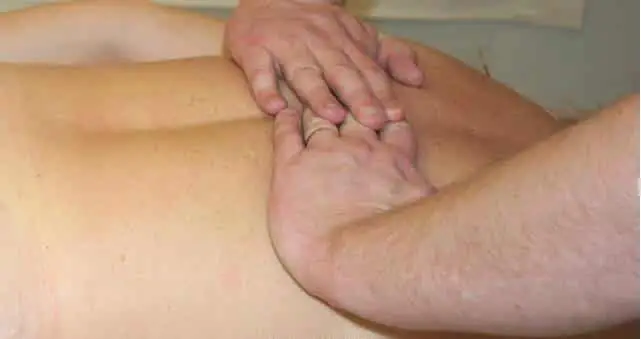Tapotement massage definition is best described as a ‘percussion’ massage. The word tapotement comes from the word ‘tapoter’ in French, which when translated literally means, ‘to tap, or pat’.
It encompasses a specific range of techniques used in Swedish massage and other forms of massage therapy. Typically administered with the client’s hands and no other tools.
These techniques were designed to stimulate the body’s nervous system and release lymphatic build up. Lymph is the fluid that circulates throughout our bodies and collects and stores toxins. Massage helps to release these toxins, and as a result a person can feel a lot better both mentally and physically.
There are a range of massage movements that come under the umbrella of tapotement, these are as follows:
Contents
Tapotement Massage Techniques and Strokes
Cupping
Cupping involves cupping the hands and being struck lightly in a quick and rhythmical motion. It’s a stimulating technique and used by experienced therapists as part of their massage sessions.
Hacking
This is a slightly more impactful motion designed to work on knots and muscular tightness. It’s carried out very quickly and can penetrate deep into the tissue when a lot of pressure is applied.
Plucking
Plucking feels like a bird pecking at you with their beak. The therapist ‘pecks’ at the top of the skin, plucking in quick succession and working out any tightness. It’s a light motion and is very relaxing.
Pounding
Pounding is exactly as it sounds. The therapist pounds their fists on the client, but with technique and the correct pressure so it’s not as painful as it may sound. It’s not a popular technique with experienced therapists as they develop more refined techniques.
Pummelling
With loosely clenched fists the client pummels the clients flesh. This technique operates at around 8-10 contacts per session and is incredibly relaxing and rejuvenating for the areas being worked.
Tapping
Tapping is a light movement that is a lot slower and usually used as an opening technique. It’s only performed for a short period of time and will lead into some other techniques.
Benefits of Tapotement
There are a lot of physical and mental benefits to tapotement techniques. The following are some of the more popular benefits that lead people to book a session:
- Increased blood flow stimulating the body’s natural healing process
- Strengthens the body’s immune system
- Rejuvenates the mind and the body increasing awareness and focus
- Helps relieve the effects of stress and anxiety
- Helps athletes recover from intense workouts faster
Contraindications of Tapotement Techniques
A lot of the typical massage contraindications apply to tapotement techniques, such as the following:
- Recent surgeries and certain injuries
- Skin conditions, open sores and cuts
- Paralysed muscles
- Varicose veins
Tapotement massage should not be used on bony parts of the body, It’s intended for fleshy areas like the buttocks, large leg muscles and the back. It will be painful if the therapist strikes the bone, and can cause bruising and damage to the tissue.
How Often Should I Have Tapotement Therapy?
This largely comes down to the individual and their lifestyle. People who exercise a lot or are professional athletes can have treatment several times a week. It helps them recover quicker from working out, helping the muscles heal and repair stronger and faster.
Some people are on their feet most of the day, or sit down for their day job. These people can find a lot of relief with a massage, especially on their back. Clients experiencing a reduction in mobility or range of motion can also seek out this form of massage therapy.
Image credit: massagenerd.com

I’m a MA, (CMT) Certified Massage Therapist, Licensed Massage Therapist (LMT), and Reiki Master — I’m a licensed massage therapist with over 10 years of experience in the industry.


